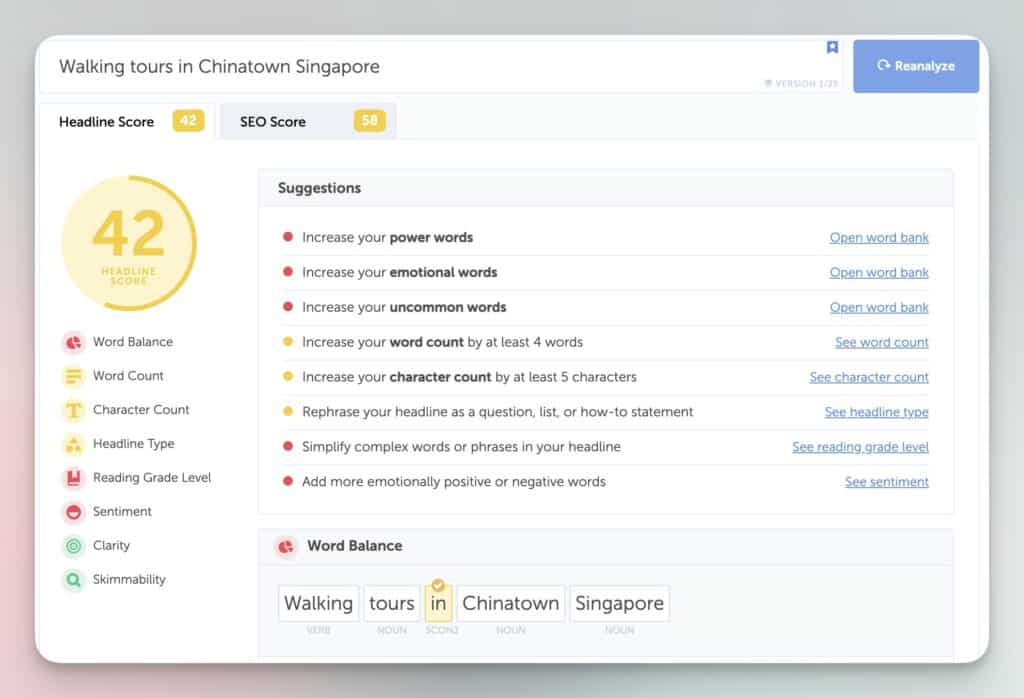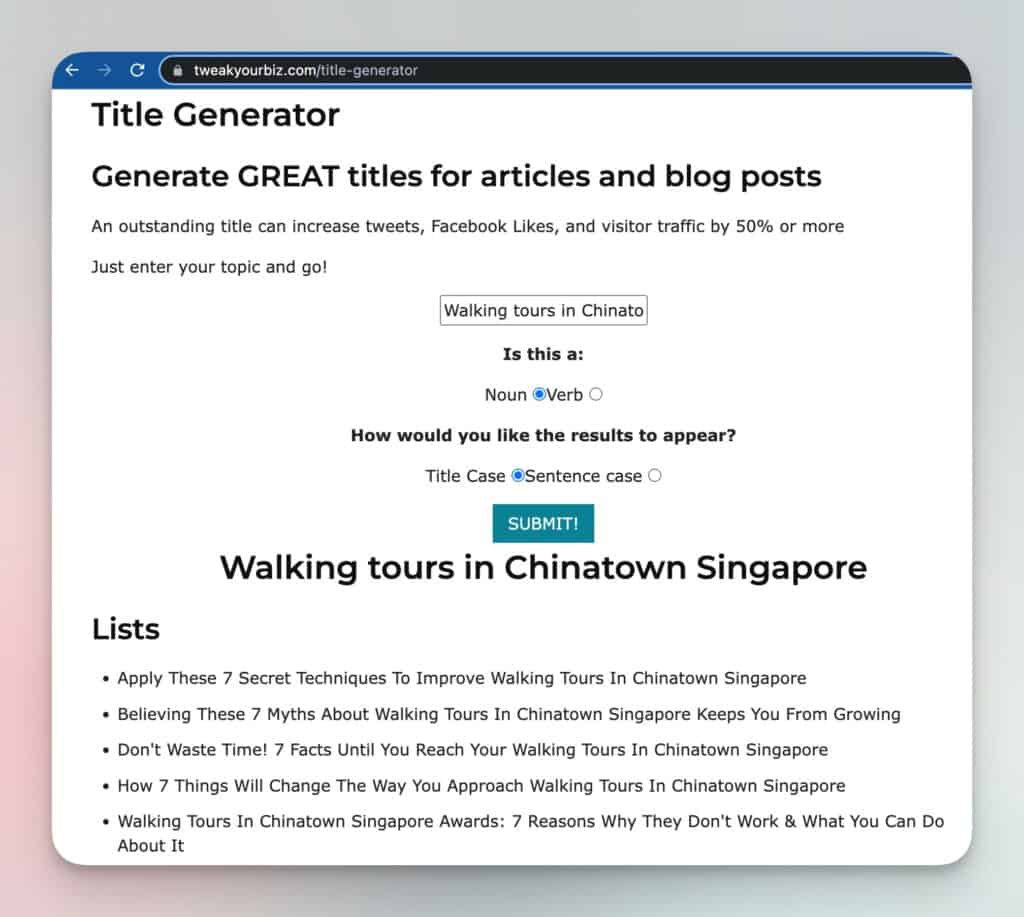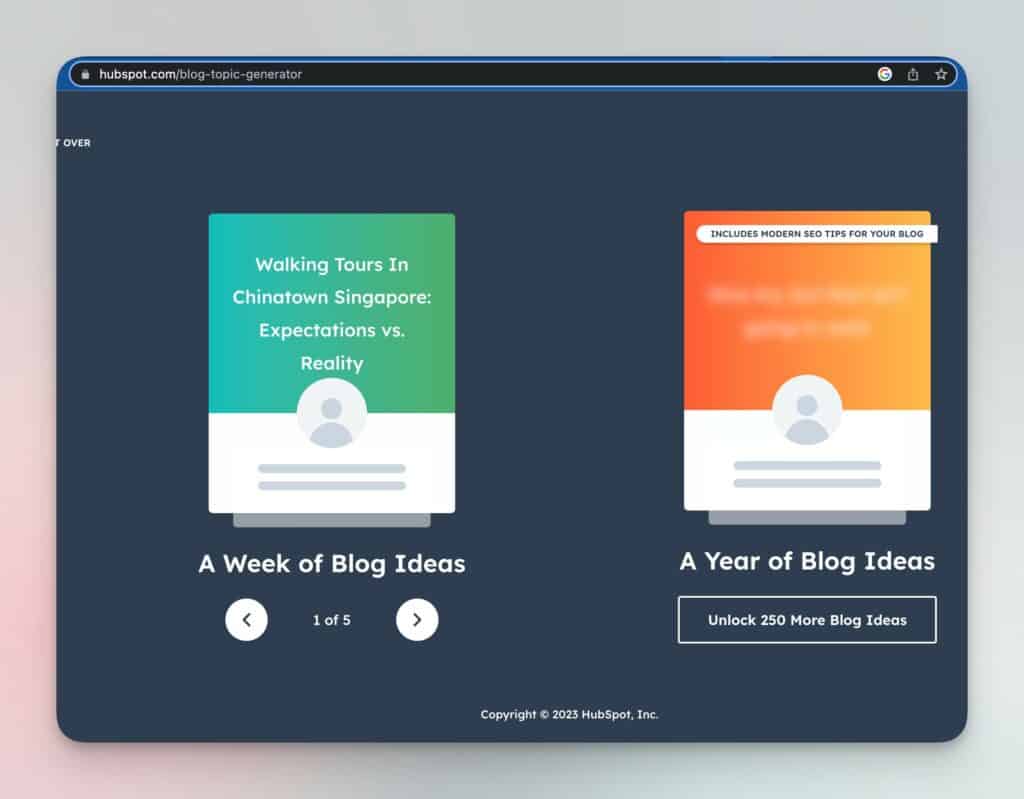Creating an effective headline for a blog post is one of the most important aspects of successful blogging. Readers may be less likely to click on your article without an engaging and attention-grabbing title. A good headline should capture the reader’s attention while accurately conveying what the post is about. Neil Patel, the renowned expert in digital marketing, highlights five key steps that can help you craft powerful headlines which will draw readers into your posts.
First, it is essential to consider your target audience when creating your headline. Understanding their desires and interests will give you a better idea of how to write your heading to make them want to read more. Additionally, utilizing power words such as “unforgettable” or “mind-blowing” within the title can establish an emotional connection with potential readers by making them curious about what lies ahead in the post.
In addition to using power words, analyzing competitors’ blog titles can provide insight into crafting unique yet effective titles. Taking inspiration from other popular posts allows you to create something fresh and innovative that still resonates with readers who subconsciously crave new ideas. With these tips provided by Neil Patel, bloggers can now access powerful strategies that will help them generate compelling headlines designed to captivate their target audiences and increase engagement levels with their content.
Understand The Power Of A Headline
Headlines are the first thing readers see when scrolling through search engine results or scanning a page, and can determine how much of your content is read. For example, headlines with keywords that appear at the top of search engines often attract more clicks than those that don’t. This means creating effective headlines for blog posts is essential to reach wider audiences and increase visibility on the web.
To create an eye-catching headline, it’s important to understand what makes people click and interact with certain types of content. Data-driven decisions are key; research tools like BuzzSumo or Google Trends can provide valuable insights into which topics are trending and appeal most to your target audience. It’s also wise to use language that resonates with them, such as humour or phrases they may be familiar with – this helps your post rank higher in organic searches. Furthermore, collaborating with advertising partners will enable you to boost exposure further by tapping into their existing networks while gaining new followers simultaneously.
Creating strong headlines requires careful consideration and strategic planning, but putting in the effort pays off; successful titles will draw more attention from users and make your blog stand out from its competitors. Following these steps ensures that each content has maximum impact within its respective market sector.
Use Keywords To Optimise Your Headline
By strategically incorporating relevant words in the title of your post, you can help search engines identify its purpose quickly. This will increase visibility and ultimately drive traffic to your site as readers can find what they’re looking for faster – increasing the chances that they’ll read your article. Personalising content by including localised phrases or language variations can also boost users’ engagement in different countries or regions.
When constructing headlines, make sure that any keywords used are appropriate for the topic and interesting enough to grab the attention of potential readers. When done correctly, this simple but essential step can greatly impact click-through rates and ensure the success of your blog post!

How Long Should A Headline Be
Creating effective headlines is important to attract readers and increase engagement with your blog. It has been reported that 80 per cent of people read the headline, but only 20 per cent read the rest of the content. This makes it even more important to craft a compelling headline for your posts, as it will significantly affect how many people view what you write.
When coming up with a good headline for your post, there are several things to consider, including length, keywords, and style. Generally speaking, headlines should not be too long; ideally, they should be no more than 8-12 words. The best headlines use keywords that describe what the article is about so that when potential readers search using those words or phrases in search engines such as Google or Bing, they find your articles faster. Additionally, writing headlines in a conversational tone can help draw attention from readers who may be skimming through their social media feeds.
It’s also beneficial to partner with advertising and analytics partners like Google Ads and Facebook Ads to gain insights into which topics and types of headlines generate the most clicks or impressions. Doing this type of research gives helpful information on which words work best in titles to ensure you optimize every post’s title for maximum exposure online. Moreover, sharing interesting statistics in blog posts helps reinforce why certain pieces of information are worth reading; it’s always better to give facts rather than just making assumptions!
Analyse Competitors’ Headlines
In order to create an effective headline for your blog posts, it is important to analyse the headlines of competitors in your industry. By looking at competitors’ content, you can gain valuable insights into what kind of headlines will help draw readers and drive engagement.
Analytics partners such as BuzzSumo allow you to quickly search for popular articles with successful titles through competitor websites and social media channels. This data lets you identify which topics resonate well within each industry, so you can emulate those same tactics when creating your titles. Additionally, comparing multiple sources of information from analytics partners helps inform decisions while ensuring the best results are achieved.
When crafting headlines, don’t forget to share information among colleagues or external collaborators who may have different perspectives on attracting readership. In doing so, you can learn new approaches and apply them in future blog post titles – giving yourself a greater chance at success!
Create Attention-Grabbing Titles
Once you have studied and analyzed your competitors’ headlines, it is time to create attention-grabbing titles for your own blog posts. To start, brainstorm words related to your post’s topic. This could include adjectives, nouns, verbs, or even phrases that capture the essence of what you plan to discuss in your article. Once you’ve come up with some ideas, begin constructing potential headlines using these words as building blocks.
Try experimenting with different headline structures, like questions or statements that evoke curiosity among readers. You might also consider using power words such as “amazing” or “proven” to help make your title stand out. Additionally, try to ensure each word in your headline has a purpose – avoid filler words that don’t add value to the title’s meaning. A good practice is to read through several drafts aloud and see if they sound convincing when spoken out loud; this will help ensure only the strongest titles remain in contention.
Your goal should be to craft a catchy yet meaningful title that accurately reflects the content inside the blog post while still being able to draw people into clicking on it in search engine results pages (SERPs). It takes time and practice, but by utilizing these tips and techniques diligently, you can develop highly clickable blog titles every time!
Tools To Help You Optimize Your Headline
There are some useful tools out there that can help you optimize your headlines for maximum impact.
- CoSchedule Headline Analyzer: This tool offers insight into how strong or weak your headline is by scoring it against its criteria and advising you on improving it. It also provides suggestions for alternate words and phrases to refine your title until it’s perfect easily.

- Tweak Your Biz Title Generator: This tool allows you to enter your keyword and generate a list of potential titles based on that keyword. You can choose from several categories, including lists, how-to’s, and questions.

- HubSpot Blog Topic Generator: This tool allows you to enter up to three keywords and generates a list of potential blog titles based on those keywords. You can then customize the titles to fit your needs better.

These tools provide valuable assistance when creating compelling blog headlines that will stand out among competitors and attract more viewership for your content. Using these resources correctly, bloggers can craft titles that grab their reader’s attention while accurately conveying what the post is about—ultimately converting them into loyal followers who eagerly await each new article they publish!
Checklist to create an effective blog posts headline
Checklist for creating an effective headline for blog posts:
- Keep it clear and concise: The headline should accurately reflect the post’s content while being short and to the point.
- Use attention-grabbing words: Use strong action verbs and power words to grab readers’ attention and make them want to read more.
- Include relevant keywords: Use keywords relevant to the post’s topic, as this can help with SEO and make the post more discoverable in search results.
- Make it unique: Avoid using generic or overused headlines. Instead, try to create a unique and compelling headline that stands out.
- Ask a question: Asking a question in the headline can pique the reader’s curiosity and encourage them to read more to find the answer.
- Use numbers: Including numbers in the headline, such as “10 Tips for…” or “5 Reasons Why…” can catch the reader’s attention and make the post more shareable.
- Keep the headline length under 70 characters or no more than 8-12 words.
- Test and refine: Try different headline variations and test their effectiveness by tracking metrics such as click-through rates and social shares. Refine the headline based on the results.
By following this checklist, you can create effective headlines for your blog posts that grab readers’ attention and entice them to read more.
Conclusion
The power of an effective headline should not be underestimated. Crafting a captivating headline can exponentially increase readership and engagement with your blog posts. With over one billion websites competing for web traffic, ensuring that your content stands out from the crowd is more important than ever.
Studies have shown that 8 out of 10 people will read a post’s headline, but only 2 out of 10 read the article. This statistic highlights how essential it is to create eye-catching and informative headlines to draw in potential customers and keep them engaged. Optimizing keywords can help you get higher rankings on search engine result pages, leading to increased visibility for your content. Additionally, research competitors’ titles and tools, such as CoSchedule’s Headline Analyzer or Hemingway App, to hone your writing skills before publishing any articles online.
In conclusion, creating an attention-grabbing title is key to ensuring our blogs stand out and attract readers. Utilizing keyword optimization techniques while researching competitor titles and using available tools can lead us towards crafting powerful yet concise headings, which will increase click-through rates significantly, thereby boosting overall website traffic figures.